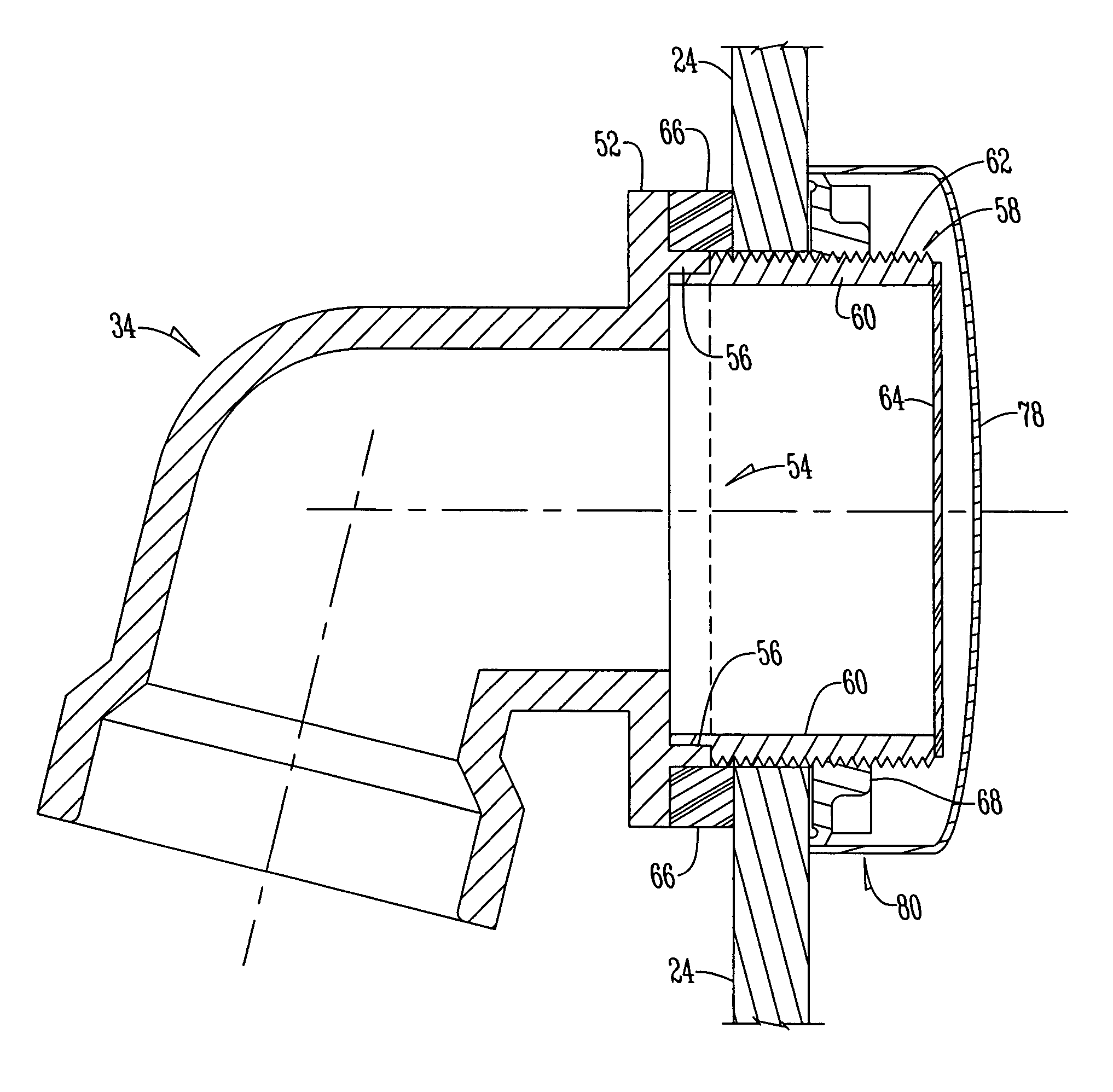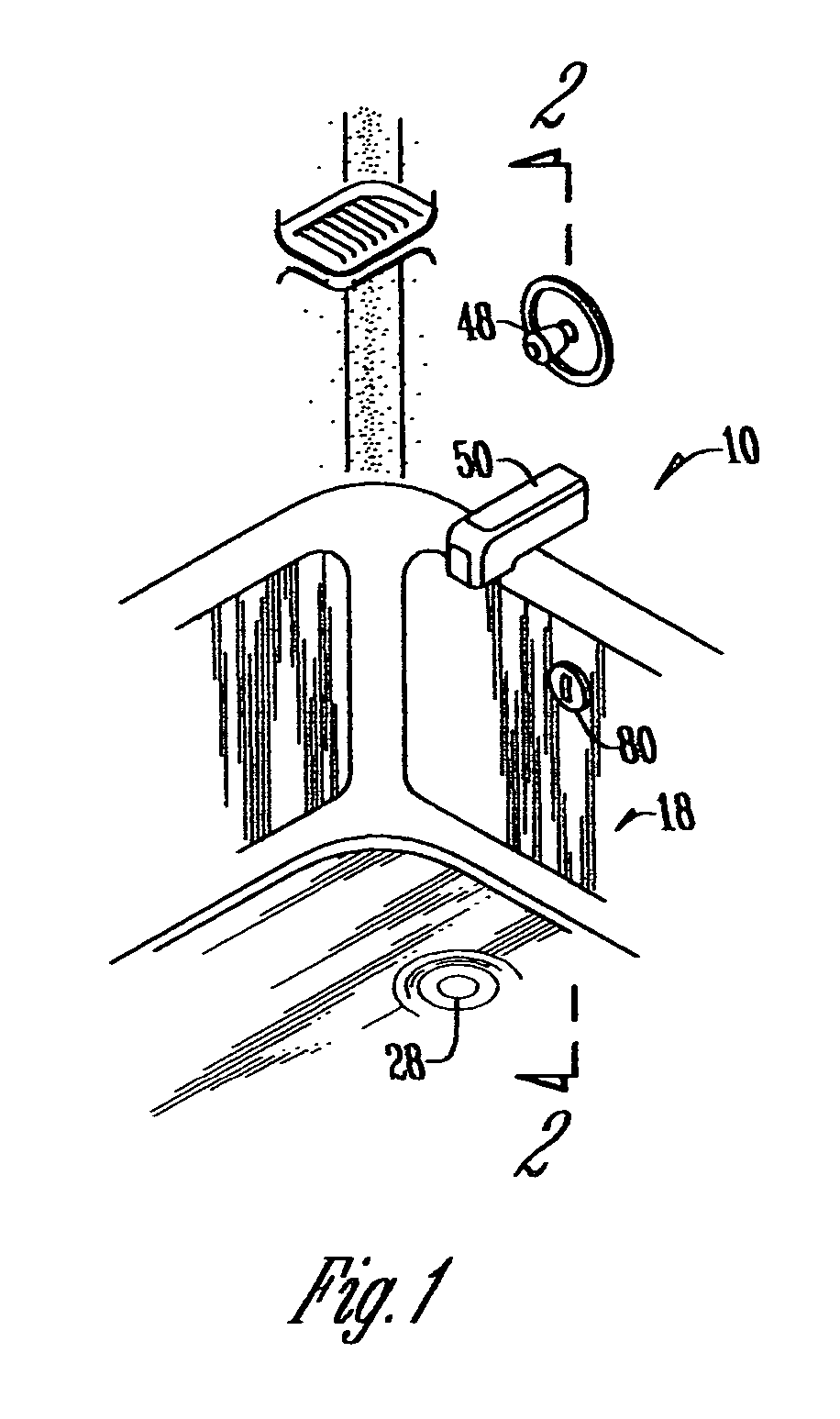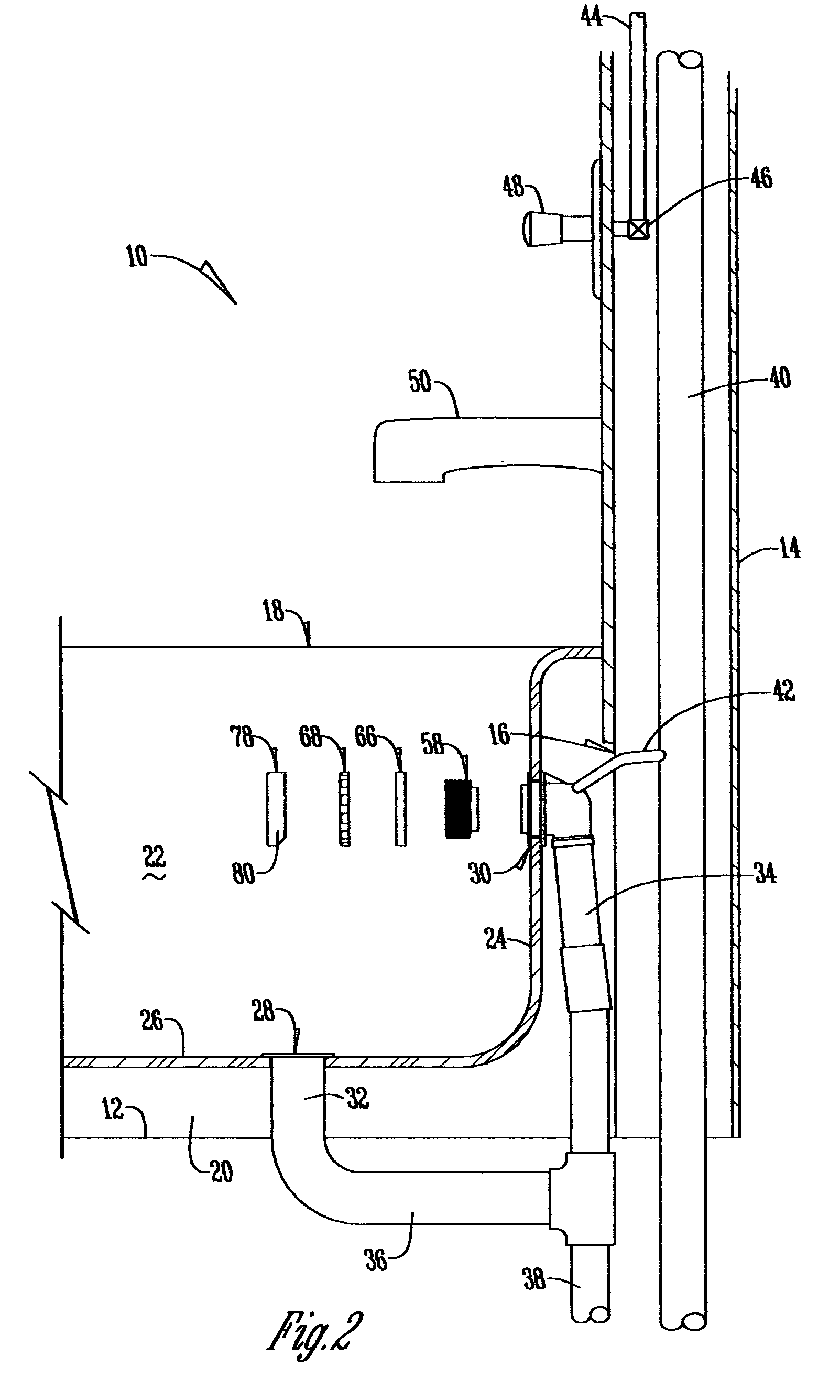Overflow assembly for bathtubs and the like
- Summary
- Abstract
- Description
- Claims
- Application Information
AI Technical Summary
Benefits of technology
Problems solved by technology
Method used
Image
Examples
Embodiment Construction
[0022]With reference of FIGS. 1 and 2, a conventional bathroom structure 10 has a floor 12, and a hollow wall 14 with a wall opening 16 therein. A conventional bathtub (“tub”) 18 has a base 20 which rests upon floor 12. Sidewalls 22 extend upwardly from base 20 as does an end wall 24. The end walls 24 extend upwardly from the bottom 26, perpendicular to the side walls 22, and have an outer surface. A bottom 26 dwells in spaced relation to the floor 12.
[0023]A conventional drain port 28 is located in bottom 26. A conventional overflow port 30 is located in the end wall 241 (FIG. 2). A vertical drain pipe 32 extends downwardly from drain port 28, and overflow drain pipe 34 extends downwardly from overflow port 30. A horizontal pipe 36 connects pipes 32 and 34. A drain pipe 38 extends downwardly from the junction between pipes 34 and 36.
[0024]A conventional vertical vent pipe 40 is located within the hollow wall 14. Pipe 42 interconnects vent pipe 40 and the upper end of overflow drain...
PUM
 Login to View More
Login to View More Abstract
Description
Claims
Application Information
 Login to View More
Login to View More - R&D
- Intellectual Property
- Life Sciences
- Materials
- Tech Scout
- Unparalleled Data Quality
- Higher Quality Content
- 60% Fewer Hallucinations
Browse by: Latest US Patents, China's latest patents, Technical Efficacy Thesaurus, Application Domain, Technology Topic, Popular Technical Reports.
© 2025 PatSnap. All rights reserved.Legal|Privacy policy|Modern Slavery Act Transparency Statement|Sitemap|About US| Contact US: help@patsnap.com



